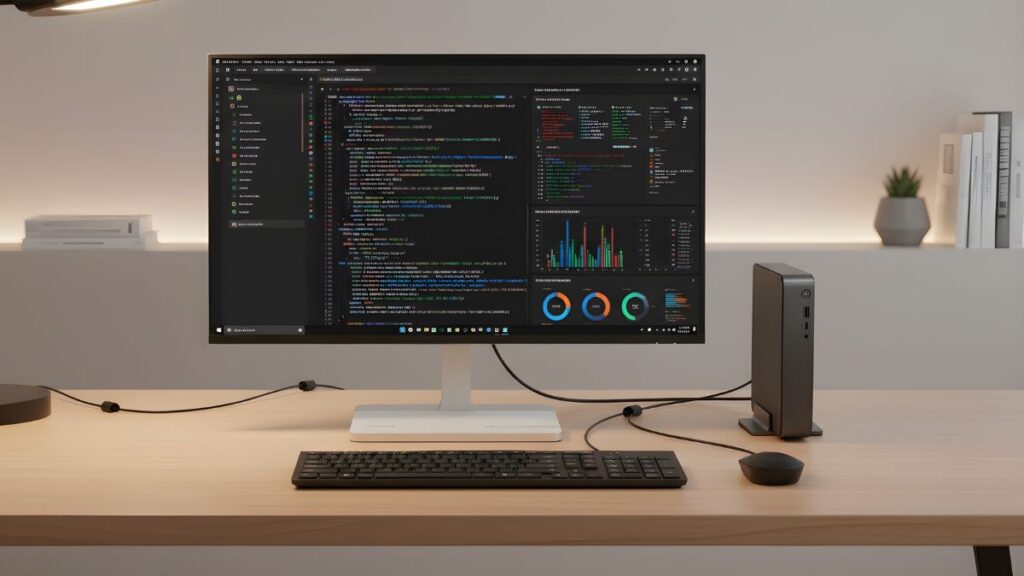I just finished off my first and last airline trip of the year which was to Qualcomm’s annual analyst event which was in Hawaii this year. Lenovo continues to impress me by putting in the effort to be at the center of events from every one of their major partners and they did it again at this event. While most of the OEMs, including Microsoft, with their impressive Surface effort, often talk about taking on Apple, few have the breadth to do so even though Qualcomm has provided them with a viable technical platform in their coming Snapdragon 8 offerings, that—on paper—far outstrip what Apple has, to do so.
Lenovo is the exception as they are the only competitor with both a high level of design focus and the potential ability to counter Apple’s core strength with is based on their smartphones, not their PCs. And, Motorola, with their old Razr line, once dominated that space and still has the potential to do so again.
Let’s explore Apple’s potential exposure and what the partnership between Lenovo and Qualcomm can do to exploit it.
Apple’s Strengths and Weaknesses
Apple has never really been a technology leader but, under Steve Jobs they were unmatched in marketing and proved that, when done right, marketing could more than overcome a technology weakness. Their initial iPhone took a design based on the old LG Prada, which didn’t sell well at all, and turned it into a market killer by convincing the vendors that led the market at that time to chase them. The strategy isn’t too dissimilar to what Tesla, under Musk, is doing to the automotive market and it was brilliant.
But Jobs is gone, the marketing engine they once had appears to have been dismantled, and they haven’t had a true breakthrough product since then—even though the Apple Watch on spec could have been. As a side comment it is fascinating to me that the Apple Watch, in terms of technology, is a far more competitive product than the first iPhones were but a lack of marketing and interoperability crippled it—showcasing Jobs’ brilliance and a lesson Tim Cook clearly didn’t learn.
Apple’s marketing strength reduction isn’t the firm’s only weakness—it has three others. One is an almost rabid focus on margins which is causing their offerings to degrade competitively over time while becoming more expensive, their lock-in strategy which creates an internal belief that they can milk their customers for money while reducing the quality of their offerings, and an inability to effectively sell to businesses because they both lack that skill set, and that profit focus prevents a viable solution for that segment.
Exploiting Apple’s Weakness
Lenovo’s strategy appears to be focused largely on Apple’s weakness in business because that will be the area where Apple will have the greatest difficulty in responding. What the business market wants is a highly consistent offering that covers PCs, tablets, and smartphones. And while many of the OEMs can do PCs and tablets, smartphones have, so far, been a bridge too far, and, unfortunately, smartphones are a critical element of that effort.
With Qualcomm’s Snapdragon 8, Lenovo can create a full hardware blend with common security and management across all 3 categories. Their designs are competitive in appearance to Apple’s and their Think brand is far stronger, particularly in large enterprises and government than Apple’s. In addition, Lenovo is the only company that not only has their own manufacturing but bridges the US and China the two largest markets making it likely they can do a better job dealing with the current logistics nightmare than any company, including Apple. Qualcomm’s Snapdragon 8, on paper (no one has tested a shipping product yet) appears to be between 1 and 3 generations ahead of where Apple is in terms of AI capabilities (Siri has mostly sucked anyway), photographic capability (that exceeds that of a DSLR), security, sound quality, gaming (maybe 5 generations in this category), battery life, and graphics performance. Even with those advantages, thanks to Apple’s massive margins, Lenovo’s phones should be less expensive as well.
The result should be a compelling alternative to Apple that better meets both business and, with Google’s help, personal needs in the market and for the first time creating a true alternative to Apple in the segment where Apple is weakest.
Wrapping Up
Now there is one area where this effort could fail and that is in marketing. Apple maintains, for now, an extremely loyal customer base and they have made switch out of their products difficult. Apple has showcased how to fix this problem with their initial iPhone effort which did the same thing to Palm, Blackberry, Nokia, and Microsoft that Lenovo is planning to do to Apple. Samsung effectively demonstrated when they ran a too short campaign showcasing that most Apple buyers were old people that Apple is vulnerable to this kind of attack but neither Lenovo nor Qualcomm have ever marketed at this critical level. However, the business market may not need that level of marketing given that market is far more pragmatic in their approach unlike the consumer market. But, if this effort fails, I expect it won’t be due to the product but due to an unwillingness to fund a campaign capable of allowing this effort to reach its full competitive potential.
In any case, next year, once the Qualcomm Snapdragon 8 Lenovo products ship should be fascinating to watch. Let the games begin!
- A Legacy of Defense: Why HP Stands Alone - December 19, 2025
- Plumbing the AI Revolution: Lenovo’s Strategic Pivot to Modernize the Enterprise Backbone - December 17, 2025
- The Breaking of the Monolith: How HPE and AMD Are Rewriting the AI Script - December 11, 2025



